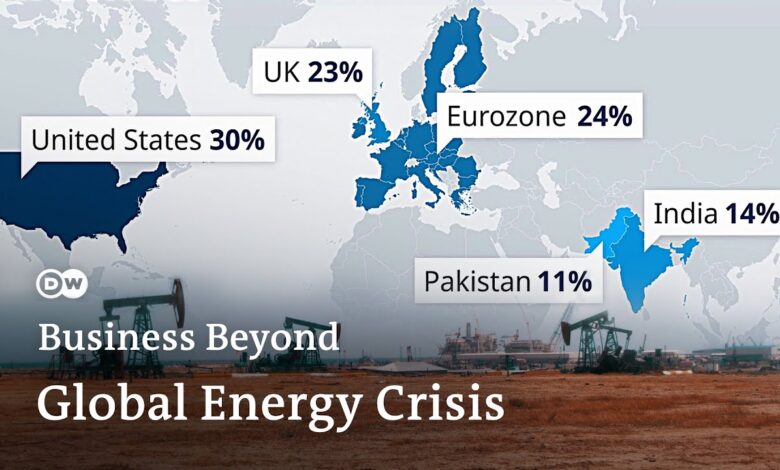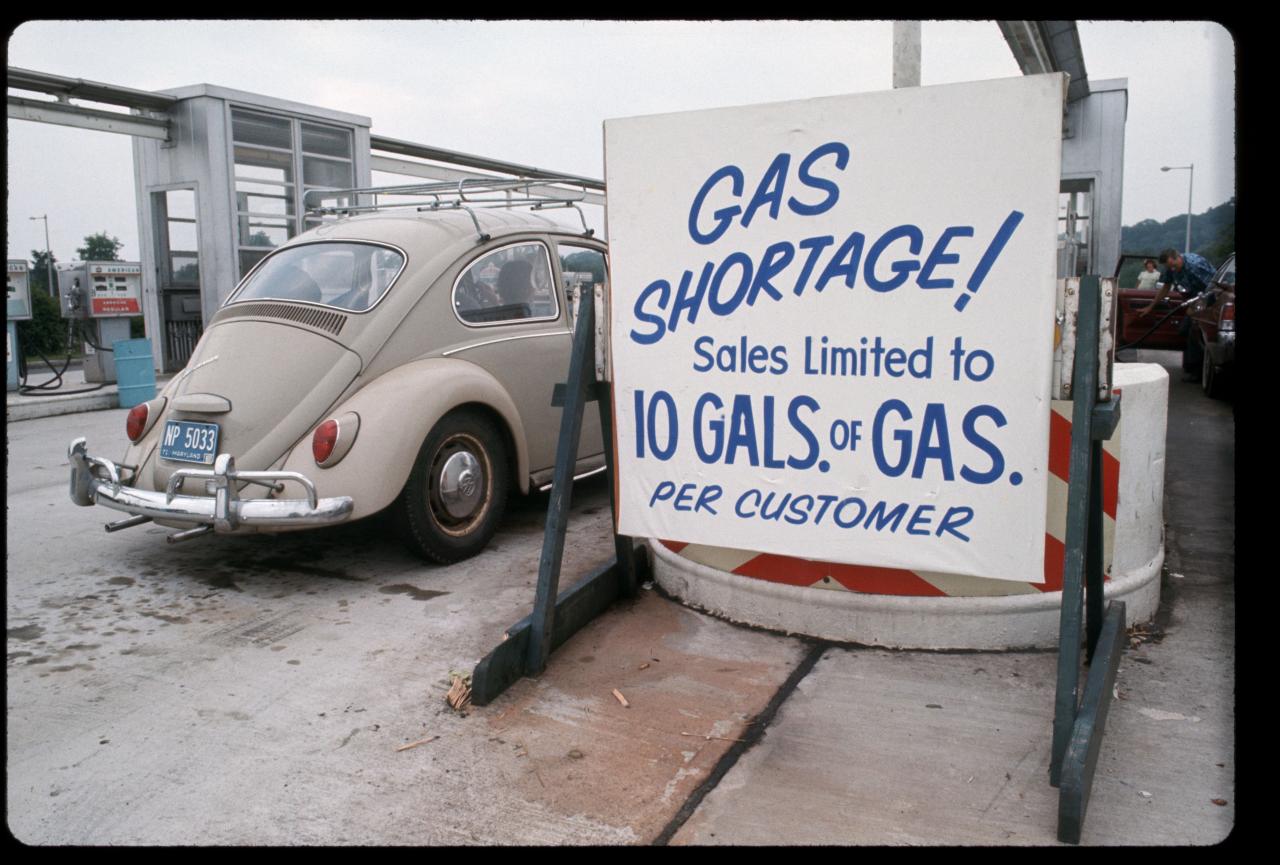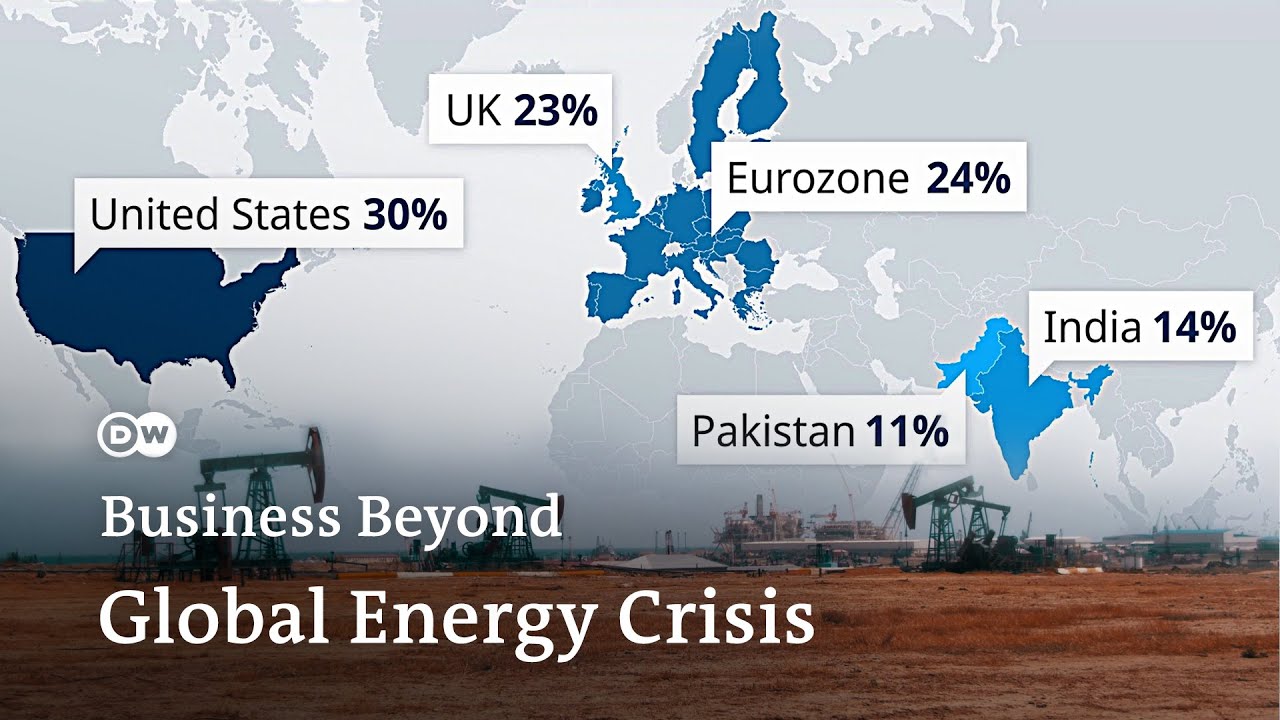
Is the World Sleepwalking into Another Gas Crisis?
Is the world sleepwalking into another gas crisis? That’s the chilling question looming large as we grapple with a volatile global energy landscape. Recent price spikes, geopolitical instability, and the ongoing transition to renewable energy have created a perfect storm, leaving many wondering if history is about to repeat itself. This isn’t just about fluctuating prices at the pump; it’s about the potential for widespread economic disruption and social unrest.
Let’s delve into the factors fueling this concern and explore potential pathways toward a more secure and sustainable energy future.
The current global energy picture is a complex tapestry woven with threads of dwindling gas reserves, escalating geopolitical tensions, and the uneven pace of renewable energy adoption. Our reliance on fossil fuels, particularly natural gas, remains stubbornly high, making us vulnerable to supply chain disruptions and price shocks. This dependence exposes key industries to significant economic risks, while simultaneously hindering our progress toward a cleaner, more sustainable energy system.
The fragility of global gas infrastructure, coupled with the potential for extreme weather events and cyberattacks, further exacerbates the situation, painting a concerning picture for the years ahead.
Current Global Energy Landscape
The global energy landscape is currently in a state of flux, characterized by shifting geopolitical dynamics, evolving energy consumption patterns, and the ongoing transition towards renewable energy sources. This complex interplay significantly impacts the global natural gas market, raising concerns about potential future crises. Understanding the current state of gas reserves, production, and consumption is crucial to assessing the likelihood of another major gas crisis.
Global Gas Reserves and Production
Global natural gas reserves are substantial, but their distribution is uneven. Major reserves are concentrated in a few regions, notably the Middle East, Russia, and North America. Production levels fluctuate based on various factors, including geopolitical events, technological advancements, and investment decisions. For example, the ongoing war in Ukraine significantly impacted Russian gas exports to Europe, creating a supply shortage and driving up prices.
Seriously, are we sleepwalking into another energy crisis? The instability of global markets is terrifying, and it makes me wonder about the potential for societal breakdown. It’s a chilling thought, especially considering the legal battles brewing, like Judge Andrew Napolitano’s assertion that gun confiscation under red flag laws is unconstitutional , which could further destabilize things. Ultimately, though, the looming energy crisis remains a major concern, demanding our immediate attention.
Meanwhile, the United States has seen increased domestic gas production, driven by technological advancements in shale gas extraction (fracking). This uneven distribution and fluctuating production highlight the vulnerability of the global gas market to disruptions.
Geopolitical Factors Influencing Gas Supply and Demand
Geopolitical factors play a dominant role in shaping the global gas market. Government policies, international relations, and political instability in key gas-producing regions all directly impact supply and demand. The Russia-Ukraine conflict serves as a stark example, demonstrating how geopolitical tensions can drastically disrupt gas flows and lead to price volatility. Similarly, tensions in the Middle East, a significant gas-producing region, can also significantly influence global gas prices.
Furthermore, trade agreements and sanctions can impact the accessibility and affordability of natural gas for different countries.
Impact of Renewable Energy Transition on Gas Consumption
The global transition towards renewable energy sources is gradually reducing the reliance on fossil fuels, including natural gas. The increasing adoption of solar, wind, and other renewable energy technologies is leading to a decrease in natural gas consumption in some sectors, particularly electricity generation. However, this transition is not uniform across all sectors and regions. Natural gas continues to play a crucial role in heating, industrial processes, and transportation, meaning that its consumption is unlikely to disappear overnight.
The speed and effectiveness of the renewable energy transition will directly influence the future demand for natural gas.
Gas Price Trends and Production/Consumption Data
The following table illustrates historical trends in natural gas prices, production, and consumption. It is important to note that these are estimates and may vary depending on the source and methodology used. The data highlights the significant price volatility in recent years, particularly the sharp increase following the start of the Russia-Ukraine conflict.
| Year | Average Price (USD/MMBtu) | Production (bcm) | Consumption (bcm) |
|---|---|---|---|
| 2018 | 4.8 | 3900 | 3800 |
| 2019 | 2.6 | 4000 | 3900 |
| 2020 | 2.0 | 3800 | 3600 |
| 2021 | 4.0 | 4100 | 3950 |
| 2022 | 7.0 | 4050 | 3850 |
Dependence on Fossil Fuels
Our global energy system remains heavily reliant on fossil fuels, particularly natural gas, creating a precarious situation vulnerable to price shocks and geopolitical instability. This dependence isn’t uniform across the globe, leading to vastly different levels of vulnerability and economic impact depending on a nation’s energy mix and industrial structure. Understanding this dependence is crucial for navigating the current energy crisis and planning for a more sustainable future.The level of reliance on natural gas varies significantly across regions.
Europe, for example, has historically relied heavily on Russian natural gas imports, a dependence that has been brutally exposed by the ongoing geopolitical conflict. This has led to soaring energy prices and energy security concerns across the continent. Conversely, regions like North America, with substantial domestic natural gas production, have experienced less dramatic price increases, although they are not immune to global market fluctuations.
Asia, particularly countries like China and Japan, also exhibit significant reliance on natural gas imports, making them vulnerable to supply disruptions and price volatility. The varying levels of reliance highlight the uneven distribution of resources and the geopolitical complexities inherent in the global gas market.
Natural Gas Consumption by Industry and Vulnerability to Price Fluctuations
Key gas-consuming industries include power generation, manufacturing (particularly chemicals and fertilizers), and heating. These sectors are highly sensitive to price fluctuations. Power generation, for example, often uses natural gas as a fuel source, meaning higher gas prices directly translate into increased electricity costs for consumers and businesses. The chemical and fertilizer industries rely on natural gas as a feedstock for production, so rising prices increase production costs, leading to higher prices for essential goods and potential supply chain disruptions.
Similarly, residential and commercial heating reliant on natural gas experience direct cost increases during periods of high prices, impacting household budgets and business profitability. The interconnectedness of these sectors means that price shocks in the natural gas market can have cascading effects throughout the economy.
Economic Implications of Sustained High Gas Prices, Is the world sleepwalking into another gas crisis
Sustained high natural gas prices have far-reaching economic consequences. Inflation is a major concern, as increased energy costs permeate the entire economy, raising prices for goods and services. Businesses face reduced profitability, potentially leading to job losses and decreased investment. Consumers face higher energy bills, reducing disposable income and impacting overall consumer spending. Governments may be forced to intervene with subsidies or other measures to mitigate the impact on vulnerable populations, straining public finances.
The long-term economic effects of sustained high gas prices could include slower economic growth, increased inequality, and social unrest. For example, the 2021-2022 energy crisis in Europe led to significant inflation, impacting consumer purchasing power and causing economic hardship for many households and businesses.
Potential Mitigation Strategies for Reducing Reliance on Natural Gas
Addressing our dependence on natural gas requires a multi-pronged approach.
- Invest in renewable energy sources: Expanding solar, wind, geothermal, and other renewable energy sources reduces our reliance on fossil fuels and provides a more sustainable and secure energy future. This includes substantial investments in renewable energy infrastructure and smart grids to optimize energy distribution.
- Improve energy efficiency: Implementing energy efficiency measures in buildings, industries, and transportation sectors reduces overall energy demand, lessening our reliance on natural gas. This involves upgrading insulation, adopting more efficient appliances, and promoting sustainable transportation options.
- Diversify energy sources: Reducing reliance on a single supplier or fuel source by exploring alternative energy sources like nuclear power or biomass enhances energy security and reduces vulnerability to price volatility. This requires strategic investments in diverse energy infrastructure and supply chains.
- Develop and deploy carbon capture and storage (CCS) technologies: CCS technologies can capture CO2 emissions from natural gas power plants and other industrial sources, mitigating their climate impact. This technology, while still developing, has the potential to significantly reduce emissions from existing gas infrastructure.
- Promote energy conservation: Public awareness campaigns and policies encouraging energy conservation can significantly reduce overall energy demand, easing pressure on natural gas supplies. This could involve targeted incentives for energy-efficient practices and public education programs.
Infrastructure and Supply Chain Vulnerabilities: Is The World Sleepwalking Into Another Gas Crisis

The global gas market’s reliance on a complex network of pipelines, liquefied natural gas (LNG) terminals, and shipping routes creates significant vulnerabilities. Disruptions at any point in this chain can ripple through the system, causing price spikes, shortages, and even geopolitical instability. Understanding these vulnerabilities is crucial for mitigating future crises.
The fragility of the global gas infrastructure is multifaceted, encompassing both physical and geopolitical risks. The interconnectedness of the system means that a localized disruption can quickly escalate into a widespread problem. This section will delve into specific vulnerabilities, their potential impacts, and strategies for mitigation.
Is the world sleepwalking into another energy crisis? The recent volatility in the gas market certainly suggests it’s a possibility. However, there’s a glimmer of hope; as Fatih Birol highlights in this article, us other IEA members have huge oil reserves that can be tapped if supply is disrupted , offering a potential buffer against severe shortages.
Whether we’ll utilize these reserves effectively remains to be seen, but the potential to avert a major crisis is there.
Pipeline Vulnerabilities
Pipelines, the backbone of natural gas transportation, are susceptible to various threats. Physical damage from accidents, sabotage, or even extreme weather events can lead to significant supply disruptions. Furthermore, aging infrastructure in many regions increases the risk of leaks and failures. The Nord Stream pipeline incidents serve as a stark reminder of the potential for geopolitical actors to weaponize energy infrastructure.
LNG Terminal Bottlenecks
LNG terminals, crucial for importing and exporting liquefied natural gas, are often subject to capacity constraints. A surge in demand can quickly overwhelm terminal processing capabilities, leading to delays in shipments and price increases. The geographical distribution of these terminals also creates vulnerabilities, as reliance on a few key locations increases the risk of localized disruptions having a cascading effect.
For example, a major storm impacting a key LNG import terminal in Europe could significantly impact the continent’s energy supply.
Geopolitical Instability and Gas Transportation
Geopolitical tensions and conflicts directly impact gas transportation routes. Disputes between nations, sanctions, or even the threat of military action can lead to pipeline closures or disruptions to LNG shipments. The ongoing conflict in Ukraine, for instance, has highlighted the vulnerability of gas transit routes through politically unstable regions. Diversification of supply sources and transit routes is a key strategy for mitigating these risks.
Disruptions from Extreme Weather and Cyberattacks
Extreme weather events, such as hurricanes, earthquakes, and blizzards, can damage pipelines, LNG terminals, and other critical infrastructure. These events can cause widespread disruptions, lasting for extended periods, depending on the severity of the damage and the time required for repairs. Furthermore, cyberattacks targeting control systems of pipelines or LNG terminals pose a significant threat. Such attacks could disrupt operations, leading to supply shortages and potentially causing safety hazards.
Robust cybersecurity measures and disaster preparedness plans are crucial for mitigating these risks.
Vulnerability Summary Table
| Vulnerability Type | Location | Impact | Mitigation Strategy |
|---|---|---|---|
| Pipeline Damage (Physical) | Various locations globally, particularly aging infrastructure | Supply disruptions, price spikes, potential safety hazards | Regular pipeline inspections and maintenance, investment in new infrastructure, diversification of supply routes |
| LNG Terminal Capacity Constraints | Major LNG import/export hubs | Delays in shipments, price increases, potential shortages | Increased terminal capacity, strategic reserves, improved forecasting and demand management |
| Geopolitical Instability | Transit routes through conflict zones | Pipeline closures, disruptions to LNG shipments, price volatility | Diversification of supply sources and transit routes, diplomatic efforts to de-escalate tensions |
| Extreme Weather Events | Areas prone to natural disasters | Damage to infrastructure, supply disruptions, potential for widespread blackouts | Robust infrastructure design, disaster preparedness plans, early warning systems |
| Cyberattacks | Control systems of pipelines and LNG terminals | Disruption of operations, supply shortages, potential safety hazards | Enhanced cybersecurity measures, regular security audits, incident response plans |
Geopolitical Tensions and Energy Security

The global gas market isn’t just about supply and demand; it’s deeply intertwined with international relations, political stability, and the ever-shifting landscape of geopolitical power. Decisions made in the halls of government, the outcomes of international conflicts, and even the subtle shifts in alliances all have a profound impact on the price we pay for energy and the security of our energy supplies.
Understanding this complex interplay is crucial to grasping the current energy crisis and predicting future challenges.Geopolitical factors are the primary drivers of volatility in global gas markets. Countries use energy as a tool of political leverage, influencing negotiations, and even imposing sanctions. This strategic use of energy resources creates instability, affecting not only the price but also the reliability of supply.
The impact is felt globally, with ripple effects cascading through interconnected energy networks.
International Sanctions and Conflicts’ Impact on Gas Supply
International sanctions and armed conflicts significantly disrupt global gas supply chains. For example, the ongoing conflict in Ukraine has severely impacted European gas supplies, previously heavily reliant on Russian imports. Sanctions imposed on Russia have limited its ability to export gas, leading to price spikes and energy shortages across Europe. Similarly, past conflicts in the Middle East have demonstrated how geopolitical instability can quickly translate into energy price volatility and supply disruptions, impacting global markets.
These events highlight the vulnerability of global energy systems to political instability and the crucial need for diversification of supply sources.
Energy Security Strategies of Different Countries
Countries employ diverse strategies to enhance energy security, reflecting their unique geopolitical positions and energy needs. Some nations, like the United States, prioritize domestic production, investing heavily in shale gas extraction and aiming for energy independence. Others, like many European nations, focus on diversifying their import sources, securing contracts with multiple suppliers to mitigate risks associated with reliance on a single provider.
Still others, such as some Asian nations, are investing heavily in renewable energy sources to reduce their dependence on fossil fuels altogether. The success of these strategies varies greatly depending on factors like geographical location, access to resources, and political relationships.
Examples of Successful and Unsuccessful Energy Independence Strategies
Norway’s successful energy independence strategy serves as a prime example. By investing heavily in its own North Sea oil and gas reserves and developing robust domestic infrastructure, Norway has secured its energy supply and even become a major exporter. In contrast, Europe’s over-reliance on Russian gas, while economically advantageous for a period, proved to be a significant vulnerability when geopolitical tensions escalated.
Are we sleepwalking into another energy crisis? The soaring cost of everything is making me nervous, and it’s not just gas prices. Think about the staggering $89.5 million spent annually on providing smartphones to illegal border crossers, as reported by this shocking article: ice issues smartphones to 255602 illegal border crossers cost is 89 5 million a year.
That kind of spending makes you wonder where our priorities lie, especially when energy security feels so precarious.
This highlights the risks of over-dependence on a single supplier, even if it’s economically efficient in the short term. A more successful strategy would involve a balanced approach that incorporates domestic production, diversified imports, and a robust transition to renewable energy sources.
Visual Representation: Geopolitical Events and Gas Prices (Past Decade)
Imagine a line graph charting global gas prices over the past decade. The x-axis represents time, and the y-axis represents gas price per unit. The graph would show a relatively stable period initially, followed by a sharp spike coinciding with the Arab Spring uprisings (around 2011). A period of relative stability would follow, only to be interrupted by another significant spike coinciding with the annexation of Crimea in 2014 and the subsequent sanctions against Russia.
The most dramatic and prolonged price increase would be visible from late 2021 onwards, directly linked to the escalating tensions and eventual invasion of Ukraine in February 2022. The graph would clearly illustrate the direct correlation between major geopolitical events and significant fluctuations in global gas prices, underscoring the profound impact of geopolitical instability on energy markets.
The Role of Climate Change
Climate change is not merely an environmental concern; it’s a significant factor exacerbating the volatility of the global energy market and increasing the risk of future gas crises. The interconnectedness of climate change and energy security is undeniable, influencing both gas production and consumption patterns in profound ways.The impact of a changing climate on the energy sector is multifaceted.
Increased frequency and intensity of extreme weather events directly disrupt gas production, processing, and transportation. Simultaneously, shifts in energy demand driven by climate-related factors further complicate the equation.
Impact of Extreme Weather on Gas Infrastructure
Extreme weather events, amplified by climate change, pose significant threats to gas infrastructure. Hurricanes can damage offshore platforms and pipelines, causing disruptions in gas supply. Prolonged droughts can reduce water availability needed for gas power plant cooling, impacting electricity generation. Similarly, intense heatwaves can strain power grids, increasing demand and potentially leading to blackouts. The 2021 Texas deep freeze, for instance, highlighted the vulnerability of gas infrastructure to unexpected cold snaps, leading to widespread power outages and significant economic losses.
Such events underscore the need for robust infrastructure resilience planning and adaptation measures.
Climate Change Mitigation and Gas Demand
Efforts to mitigate climate change, such as transitioning to renewable energy sources, inherently impact gas demand. As countries strive to meet emissions reduction targets, the reliance on fossil fuels, including natural gas, is expected to decline. The International Energy Agency’s (IEA) Net Zero by 2050 scenario, for example, projects a substantial reduction in global gas demand by mid-century.
This transition, however, is not uniform across regions and presents both opportunities and challenges for gas-producing and consuming nations. A rapid shift away from gas could lead to stranded assets and economic hardship in regions heavily reliant on the gas industry, necessitating careful planning and investment in diversification strategies.
Environmental Consequences of Increased Gas Consumption
While often touted as a “bridge fuel” in the transition to renewable energy, increased natural gas consumption carries significant environmental consequences. Methane, a potent greenhouse gas, is released throughout the natural gas lifecycle, from extraction and processing to transportation and consumption. Leaks in pipelines and fugitive emissions from wellheads contribute substantially to global methane emissions, impacting climate change more acutely than carbon dioxide.
Furthermore, the combustion of natural gas releases carbon dioxide, albeit at lower levels than coal, contributing to the overall accumulation of greenhouse gases in the atmosphere. Therefore, a continued reliance on natural gas, without stringent emission control measures, undermines climate change mitigation efforts. The development and deployment of carbon capture, utilization, and storage (CCUS) technologies are crucial in mitigating these environmental impacts, but their widespread adoption remains a challenge.
Technological Advancements and Innovation
The global energy landscape is undergoing a rapid transformation, driven by the urgent need to reduce greenhouse gas emissions and enhance energy security. Technological innovation plays a crucial role in this shift, offering potential solutions to address both challenges simultaneously. This section explores emerging technologies that could reshape future gas markets, focusing on their impact on efficiency, emissions reduction, and the potential for alternative energy sources.
Several technological advancements are poised to significantly impact the future of gas markets. These innovations are not only improving the efficiency of existing gas infrastructure and production but also offering pathways to a lower-carbon future and diversifying energy sources away from sole reliance on natural gas.
Carbon Capture and Storage (CCS) Technology
Carbon capture and storage (CCS) is a crucial technology for mitigating the environmental impact of natural gas consumption. CCS involves capturing CO2 emissions from power plants and industrial facilities, transporting them, and storing them securely underground in geological formations. Successful large-scale deployment of CCS could significantly reduce greenhouse gas emissions from the natural gas sector. For example, the Sleipner project in Norway, a pioneering CCS initiative, has been successfully capturing and storing CO2 from natural gas production since 1996, demonstrating the feasibility of this technology.
Further advancements in CCS technologies are focusing on improving capture efficiency, reducing costs, and exploring new storage options.
Enhanced Gas Production Efficiency
Technological innovation is continuously enhancing the efficiency of natural gas production. Improved drilling techniques, such as horizontal drilling and hydraulic fracturing (fracking), have unlocked access to previously unreachable gas reserves. Furthermore, advancements in data analytics and artificial intelligence (AI) are optimizing production processes, leading to increased recovery rates and reduced operational costs. For instance, the use of AI-powered predictive maintenance can minimize downtime and maximize production uptime, resulting in significant cost savings and increased efficiency.
Alternative Energy Sources Replacing Natural Gas
The increasing availability and affordability of renewable energy sources present a significant challenge to the dominance of natural gas. Several alternative energy sources are emerging as viable replacements for natural gas in various applications.
The following points highlight the potential for alternative energy sources to replace natural gas:
- Solar Power: Photovoltaic (PV) solar technology has seen dramatic cost reductions in recent years, making solar power increasingly competitive with natural gas for electricity generation. Large-scale solar farms are becoming increasingly common, providing a clean and sustainable alternative to fossil fuel-based power plants.
- Wind Power: Onshore and offshore wind power are rapidly expanding globally, driven by technological advancements that have improved turbine efficiency and reduced costs. Wind energy is a reliable and sustainable source of electricity, offering a viable alternative to natural gas in power generation.
- Hydrogen: Green hydrogen, produced using renewable energy sources like solar and wind power, is emerging as a potential replacement for natural gas in heating and transportation. While still in its early stages of development, green hydrogen has the potential to play a significant role in decarbonizing the energy sector.
- Geothermal Energy: Geothermal energy harnesses heat from the Earth’s interior to generate electricity and provide heating. This renewable energy source is particularly suitable for regions with high geothermal activity and can provide a consistent and reliable energy supply, reducing reliance on natural gas.
The question of whether we’re sleepwalking into another gas crisis isn’t easily answered with a simple yes or no. The evidence suggests a high degree of vulnerability, a precarious balance between supply and demand, and a complex interplay of geopolitical factors. While a full-blown crisis might be avoidable with proactive measures, the risks are undeniable. Diversifying energy sources, investing in robust infrastructure, and accelerating the transition to renewable energy are crucial steps to mitigate the risks and build a more resilient and sustainable energy future.
Ignoring these challenges would be a gamble we can ill afford.






